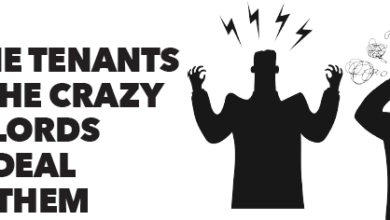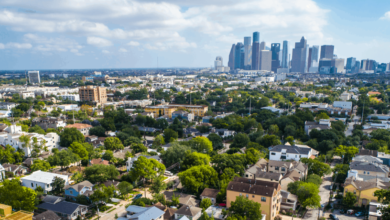Guide to Rent Stabilized Apartments in NYC

Renting in New York can be tricky. Rents often skyrocket, which means you can easily overprice a neighborhood you could afford last year. One way to avoid this fate is through rent stabilization – special offers that ensure your rent can only increase by a certain amount each year. is it really that simple? Can you just walk into a rent-stabilized apartment, plant a flag, and never worry about rent again? Unfortunately no. However, we are here to make the process a little easier to understand.
What is rent stabilization?
Rent stabilization is a form of affordable housing that covers more than one million apartments in New York. Unlike rent control, another form of affordable housing, rent stabilization increases are decided annually by the Rent Guidance Board. This means that there is no fixed percentage for your annual rent increase. However, the council has never failed to protect homes in their jurisdiction from steep rent increases.
Additionally, tenants of rent-stabilized homes are allowed to renew their lease as many times as they wish as long as they do not violate building policies. When tenants move out, apartments are still considered rent stabilized and new tenants are protected against massive rent increases through the Housing Stability and Tenant Protection Act 2019. This law also prohibits landlords from shady practices like renovating other units to raise rental prices, occupying more than one apartment for personal use, and evicting elderly and disabled tenants for the purpose of move into their accommodation. These protections are essential for the continued practice of rent stabilization, so read what your rights include here.
How to find a rent-stabilized apartment in New York

There’s actually a good chance that you already live in a rent-stabilized house. As we stated earlier, over a million homes fall into this category, and that’s by design. Rent Stabilization was created in 1969 but has been expanded and modified since its first incarnation.
Currently, there are three categories to which rent-stabilized apartments may fall. The first includes any building with more than six units that was built between February 1, 1947 and December 31, 1973. The second includes tenants who moved into a building after June 30, 1971, but only if that building was built before February 1, 1973. 1947 and has six or more units. The final category is any building that constructed or significantly renovated three or more units after January 1, 1974 using special tax benefits.
As you can imagine, these rules mean that rent stabilization applies to many buildings. If you are moving to a new location and the building is supposed to be rent-stabilized, the owner is required to include an endorsement explaining this situation. However, many landlords don’t, so it’s a good idea to do your own research on a building you want to live in. You can consult the rent stabilization status of your potential or current building. here.
FAQ for rent-stabilized housing

Can a condo or a cooperative have a rent-stabilized apartment?
Yes, but only after an old rent-stabilized house is converted into a condominium or cooperative. When this transition occurs, tenants living in the building are protected from eviction and even allowed to renew their lease as many times as they wish. However, if the tenant leaves their rent-stabilized unit, the apartment can either be sold as a condominium or retain its rent-stabilized status for the next tenant.
How can a rent-stabilized apartment be deregulated?
An apartment becomes deregulated when a unit loses its rent stabilization status. This can happen for several reasons. The most common reason an apartment becomes deregulated is when the property’s tax status changes. As noted earlier, some buildings are stabilized through a special tax program such as a 421-a or J-51 abatement. When these programs end, the buildings will likely return to their pre-stabilized state. In addition, a building can become completely deregulated if it is converted into a condo or a cooperative and the former tenants buy or leave their stabilized houses.
What should I do if my landlord illegally tries to deregulate my home?
First of all, it is good to remind them that the housing is rent-stabilized and that they must consult the regulations in force to find out if the increase in rent or the attempt at deregulation is authorized. There are a lot of rules, and they are written in complicated language. Chances are the owner doesn’t know what they’re doing is illegal. If no action is taken by the owner, file a complaint with Housing and Community Renewal. They will be your best friend in this situation.
Does my income or employment status affect the stabilization status of my home?
No, your income and employment status do not affect your housing stabilization status. However, they can be factors when trying to move into a stabilized home, as landlords are allowed to reject applicants who they believe cannot afford the rent. However, tenants already living in rent-stabilized housing are allowed to renew their leases regardless of income or employment status, although they can be evicted if they cannot pay rent for a certain amount of time. time.
Misconceptions about rent stabilization

Your home can be deregulated if a building is converted to less than six units
Not true. In rare cases, homeowners have tried to combine units into smaller complexes to deregulate their homes. For example, some building owners have combined apartments, so their complexes are expanding from six to five units. It does not disturb the building. The rent stabilization status of a building is determined by the number of units at the time of approval. This does not change because units are combined, destroyed, or converted to something else.
Your home may be deregulated if DHCR statements were incorrect or missing
Not exactly. Building owners are required to submit building condition forms and tax returns to DHCR. If these forms are completed incorrectly, or not at all, DHCR will simply request corrections. The building’s former status as a fixed-rent building overrides these errors, so tenants don’t have to worry about them.
Rent stabilization pushes up prices for rest of New York
Not true. Many opponents of rent stabilization argue that since rent prices can only increase so much, other buildings must increase their rental prices. The idea is that people living in rent-stabilized housing stay there longer, which means fewer apartments are in circulation and therefore drive up other rental prices due to demand.
However, this is completely false. Landlords raise rental prices based on supply, of course. However, given that half of NYC has had rent stabilized for decades, that’s probably not the root cause. Rents are more likely to increase due to gentrification, inflation, and location within the city. Overall, rent stabilization makes NYC affordable for low-income workers, who make up about 38% of the rent-stabilized population.
Your apartment can be priced outside of rent stabilization status
This is no longer true. Many believe that rent-stabilized housing is deregulated once it exceeds a certain rent threshold. This myth was true. Apartments could be deregulated once a house tops $2,700. However, this rule disappeared once the Housing Stability and Tenant Protection Act 2019 was passed. From now on, apartments will keep their rent stabilized status, regardless of the amount of rent for a building.
Each apartment in a rent-stabilized building has a rent-stabilized status
It is complicated. While this was once true, due to the number of changes and regulations, there is no guarantee that your home will be rent stabilized just because you are in a rent stabilized building. For example, many houses were excluded from the program at a time when rents for stabilized houses could not exceed $2,700. Some of these apartments have regained their status, but it is an ongoing process to determine if these homes will be stabilized again. In addition, there may be rent-stabilized houses in condos or cooperatives, so it is difficult to navigate.
Only the old apartments are rent-stabilized
Kind of. While most rent-stabilized housing is in buildings dating from before 1974, there are instances where apartments in these buildings have undergone massive renovations. These renovated homes are still under the protection of rent stabilization laws.
Finding a home in New York can be difficult. It takes a lot of time, money and patience to find a place, especially one in your price range. Rent stabilization might be another thing people need to watch out for, but it’s worth finding great deals on hidden gems. It is one of the largest affordable housing practices in the city and helps millions of people afford homes that would otherwise be unaffordable. These laws are in place to protect you, so make sure you know the status of your building and take advantage of all the benefits that rent stabilization brings.




